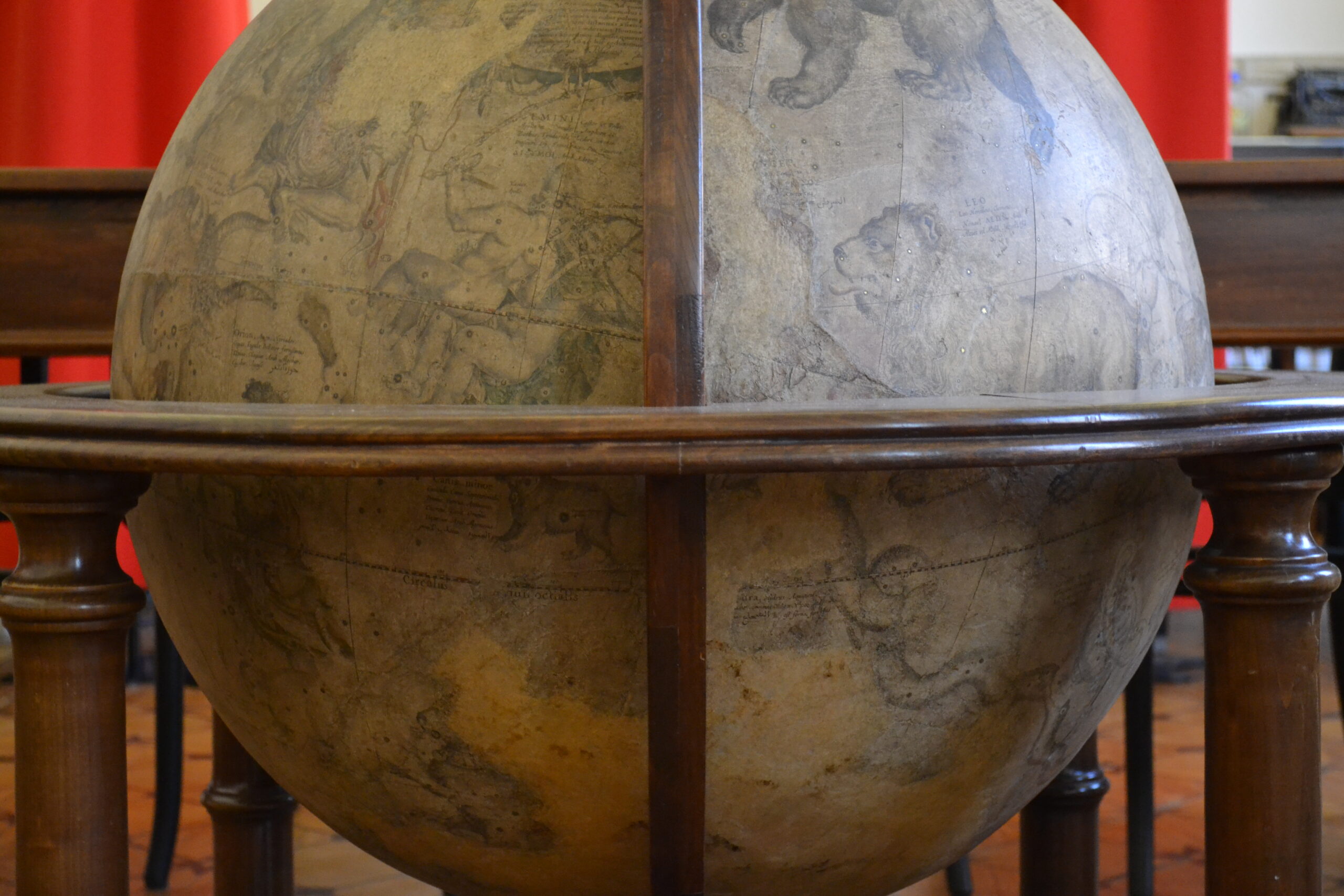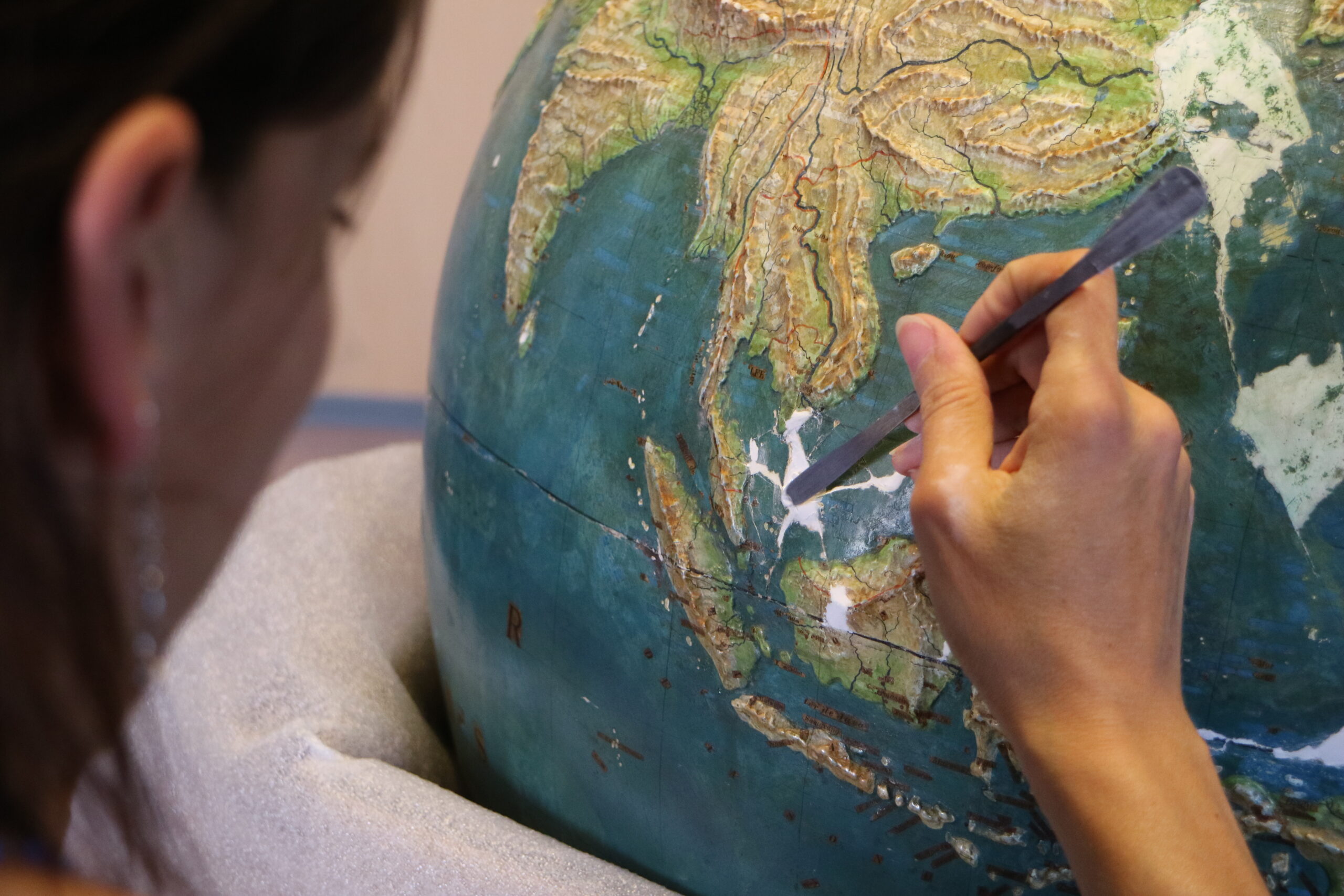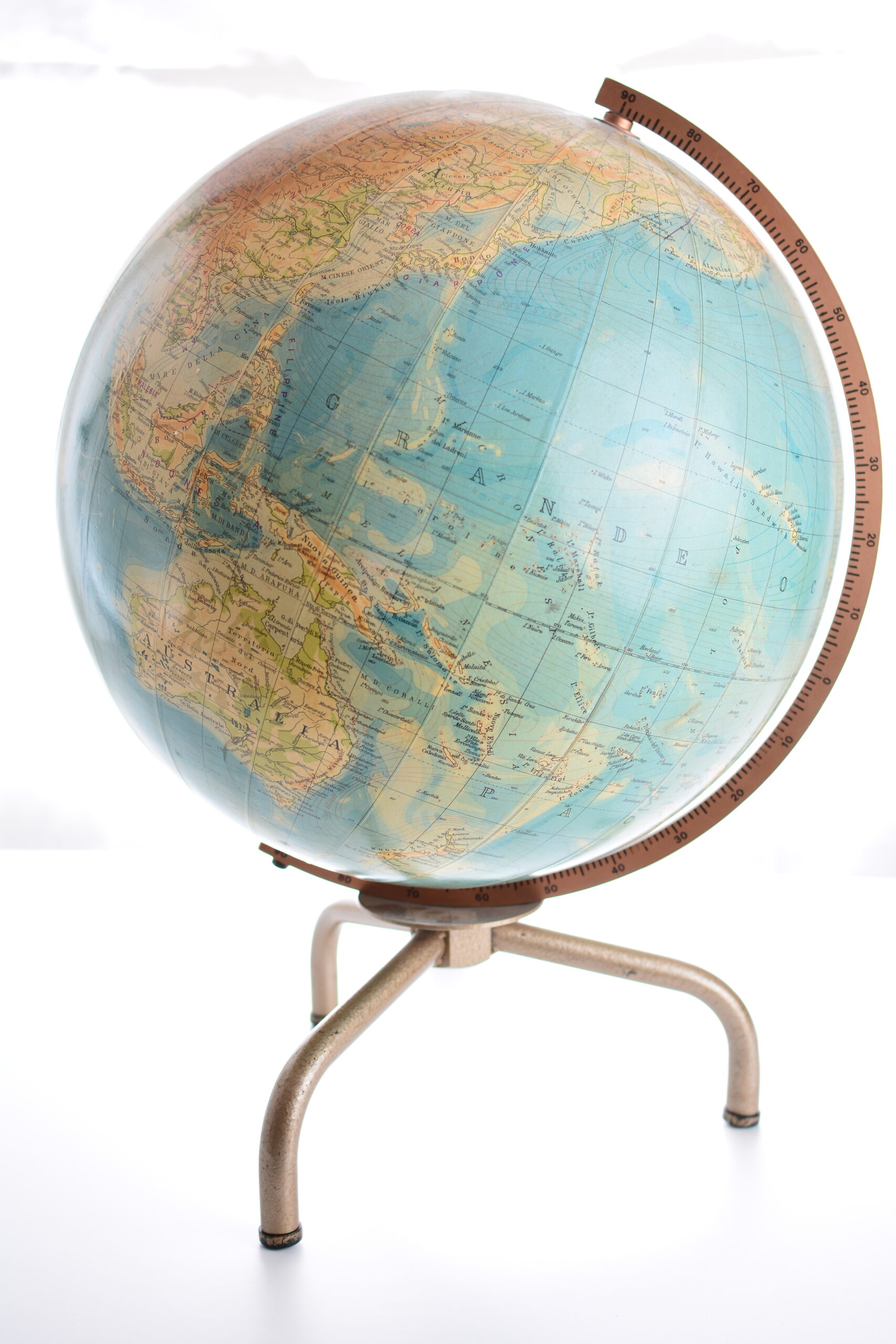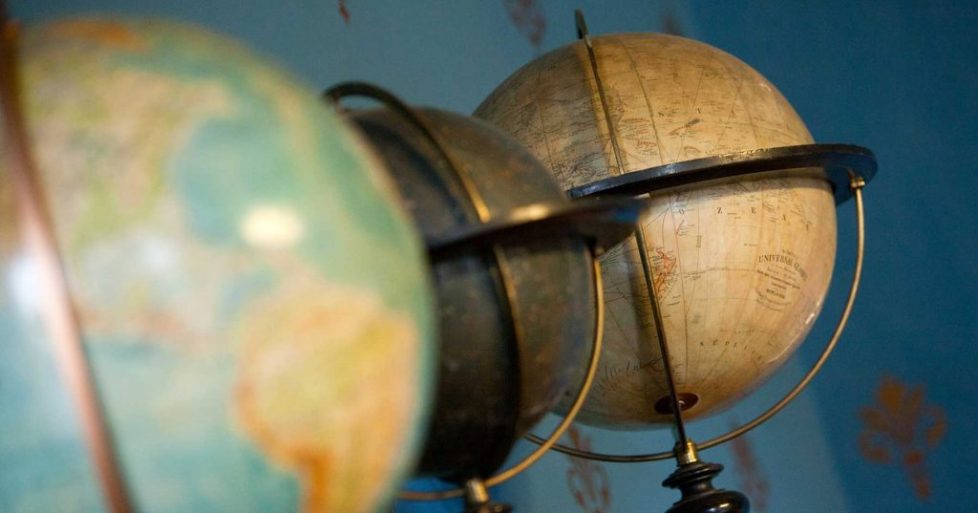Globes
Of Heaven and earth: the collection of globes and astronomical apparatus of the Museum of Geography
The collection of globes and astronomical apparatus of the Museum of Geography of the University of Padua includes eight very different items that tell of the different role that these suggestive and evocative objects have had over time.
The oldest group is represented by a terrestrial-celestial pair 68 cm in diameter, the work of the very famous Dutch cartographer Willem Janszoon Blaeu. The two globes date back to around 1650, but while the celestial one, with its fascinating watercolored constellations and gold leaf decorations, is complete, the terrestrial one has come to us incomplete. It is however in progress an important restoration that will relocate the two surviving parts on a spherical structure, allowing them to recover their original meaning. Slightly later is a third globe, also celestial, published in 1695 by the well-known Roman publisher Domenico De Rossi, based on the copper plates designed in 1636 by Matthäus Greuter. These are extremely refined and aesthetically as well as scientifically curated globes, often intended at the time to embellish places of representation.
The second group dates to the very early years of the twentieth century and is closely linked to the teaching of geography at the University of Padua. Particularly interesting is the beautiful relief globe that welcomes visitors on the threshold of the museum rooms and the one, created by the famous German cartographer Heinrich Kiepert, dedicated to world communications, where we can observe the main railway routes, steamship routes and telegraph lines that already in 1904 allowed people and information to circulate widely on Earth.
Another German globe, made in Stuttgart by Adolf Mang between 1908 and 1910, represents the main part of a universal astronomical apparatus, of which the museum preserves various other elements, albeit disassembled. In 1878 Mang himself had patented it to replace the traditional planetariums, telluriums and lunars with which astronomical geography was taught. The apparatus arrived at the Institute of Physical Geography in 1925 as war reparation.
Plan your visit today and explore the fascinating collection of globes of the Museum of Geography!






